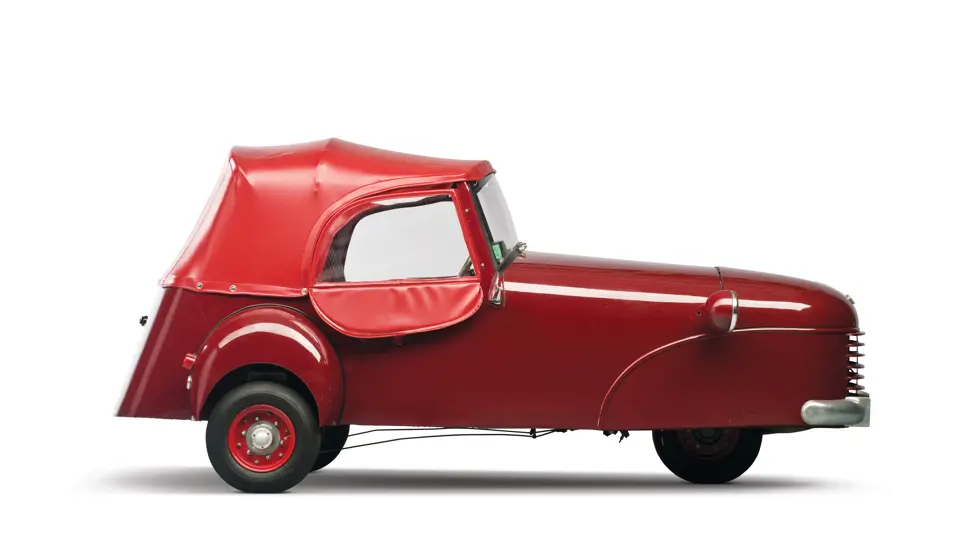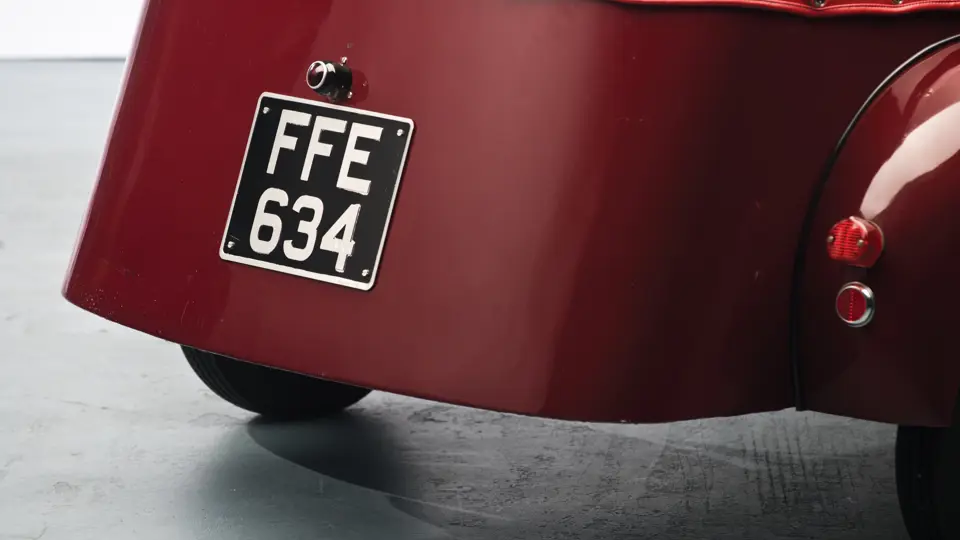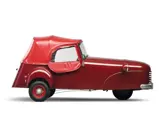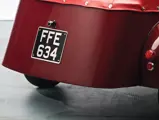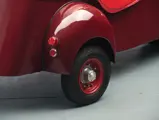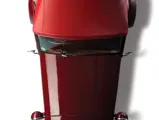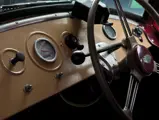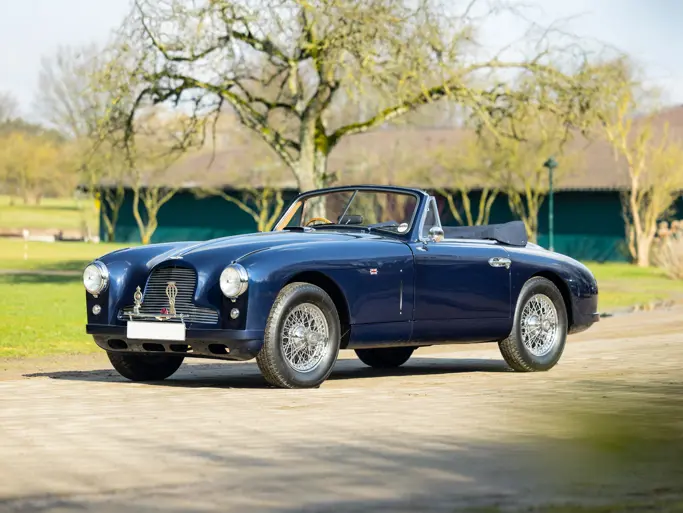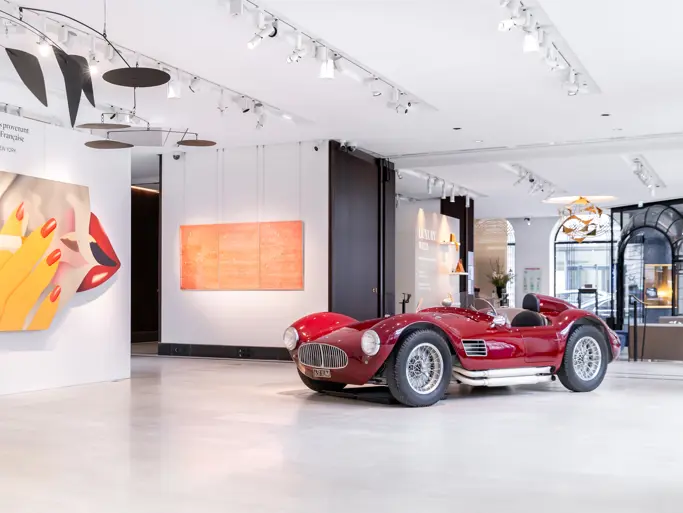With numerous improvements over the Bond Deluxe.
SPECIFICATIONS
Manufacturer: Sharp’s Commercials
Origin: Preston, Lancashire, England
Production: 1,414
Motor: Villiers 1-cyl, 2-stroke
Displacement: 197 cc
Power: 8 hp
Length: 9 ft. 1 in.
Identification No. D32787
The Bond Minicar was the quintessential British three-wheeler, and it had the longest production run, with its various models being made from 1948 to 1966.
Lawrence Bond was a maverick designer who learned weight-saving aircraft construction techniques with Blackburn Aircraft before the war. Under his own company, he built small monocoque racing cars that competed in the 5,000-cubic centimeter class. These were followed by a tiny runabout for him and his wife Pauline to run errands. Called the Bond Shopping Car, it attracted considerable interest in the press, and soon Bond was looking around for a place to manufacture it in quantity.
Colonel Reg Gray ran Sharp’s Commercials, which was involved in the refurbishing of General Motors trucks under a Lend-Lease contract. This contract was soon to expire, but Bond’s request to lease their Preston premises to build his small car was met with scepticism. However, Colonel Gray saw potential in the car and agreed to manufacture it entirely under the Sharp’s name.
The early Bond Minicars (later referred to as Mark As) were stark, simple, 300 pound vehicles with no rear suspension, no front brakes, a frameless Plexiglas windshield, wire-and-bobbin steering, and a small 122-cubic centimeter motor. They gained a solid following, however, and were soon being stretched beyond their design limits on long trips. So the steering was replaced by a rack and pinion, the Plexiglas windshield by Triplex glass, and the motor was replaced by a larger 197-cubic centimeter one, all available on the Deluxe model. This constant process of improvement and upgrading, the elements of which could be had as retrofits for older models, was a practice that was carried on for the entire life of the car.
The Bond Minicar Mark B, introduced in July 1951, incorporated the technical improvements of the Deluxe, but with the significant addition of a sliding-pillar rear suspension using small coil springs, as well as improvements to the electrics and brakes. The newly designed body looked very similar to the Mark A, but it had more room behind the seats, altered rear fenders to accommodate the suspension, and subtly larger side-screens with a roomier convertible top. This lovely Mark B is a respectable older restoration. It announces its presence with the entrance of its long burgundy nose, which is complemented by a red vinyl top.
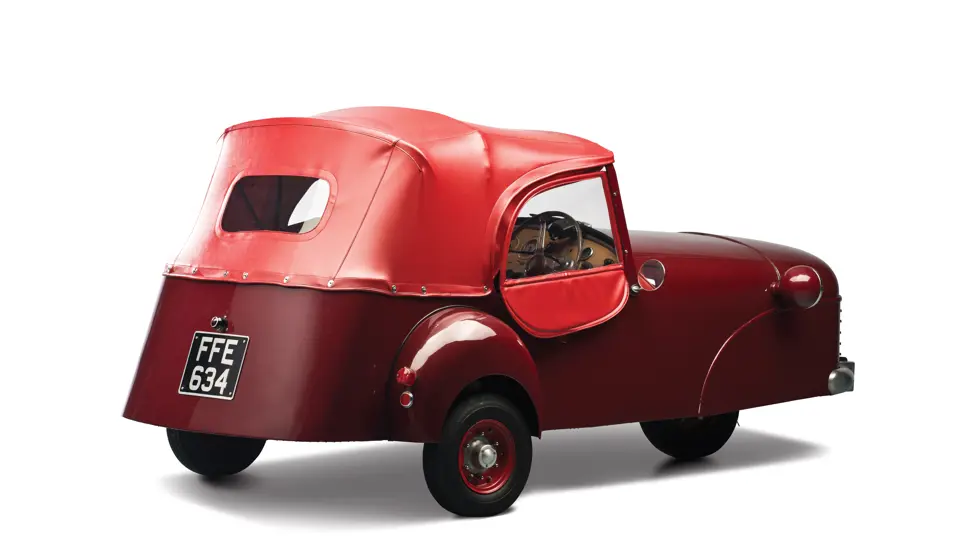

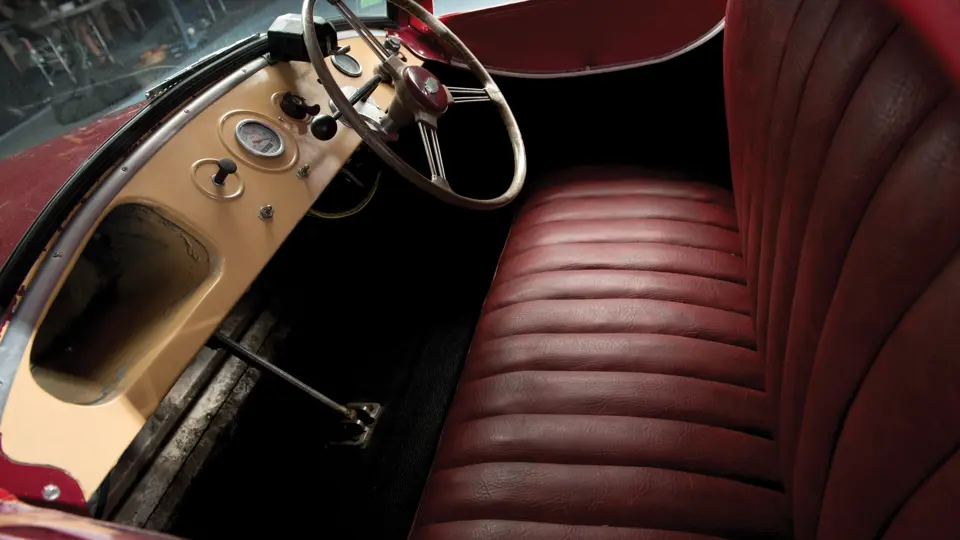

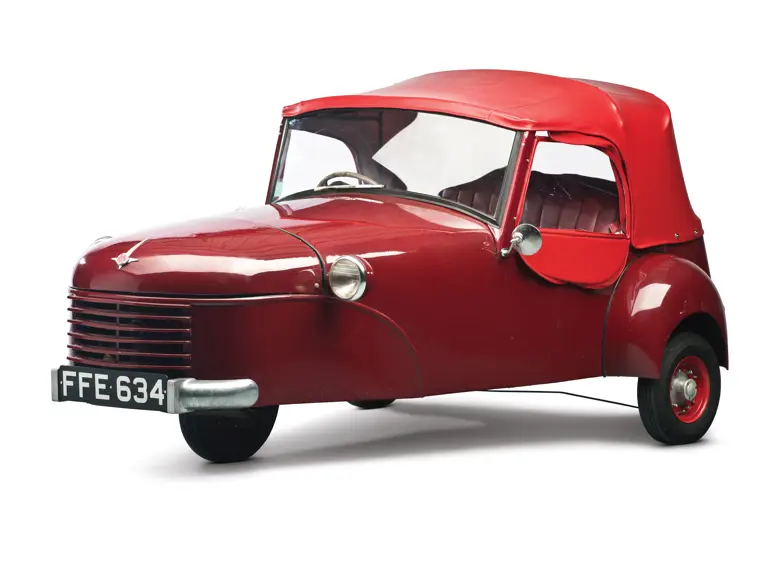
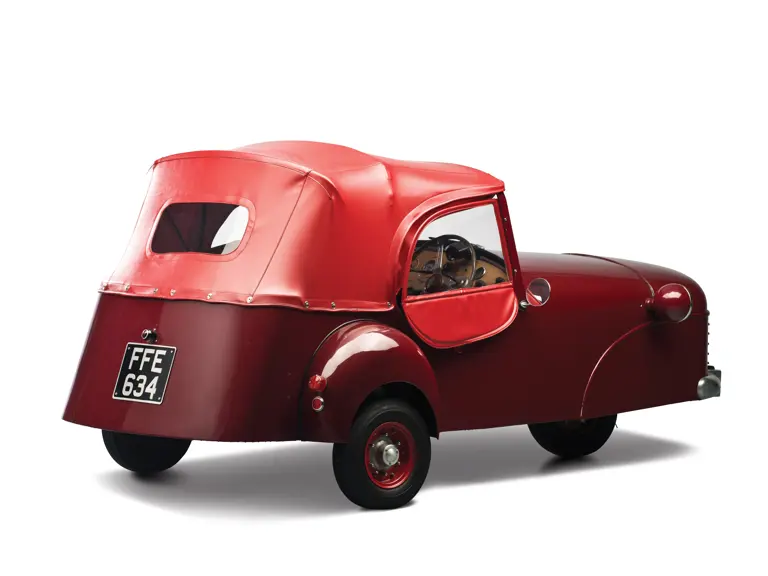
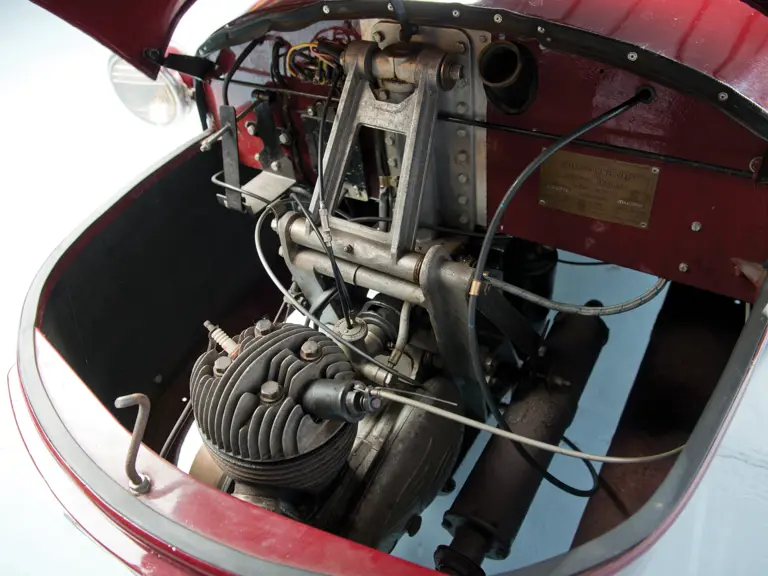
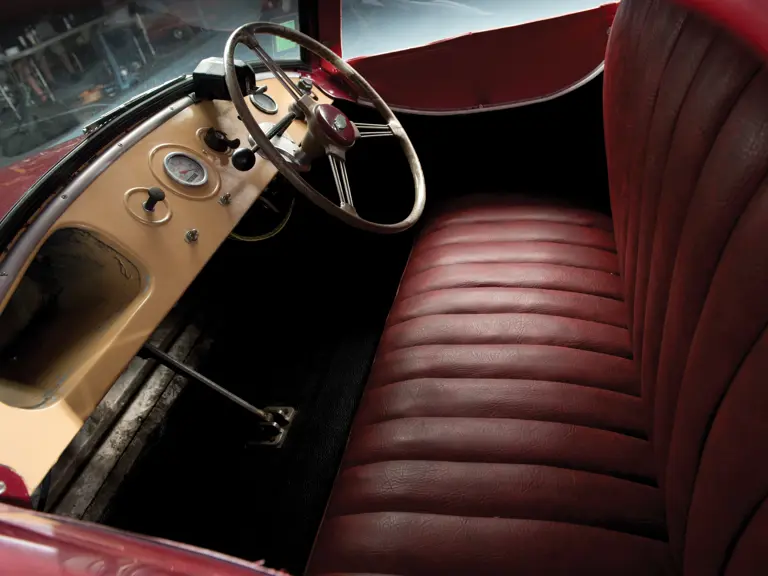
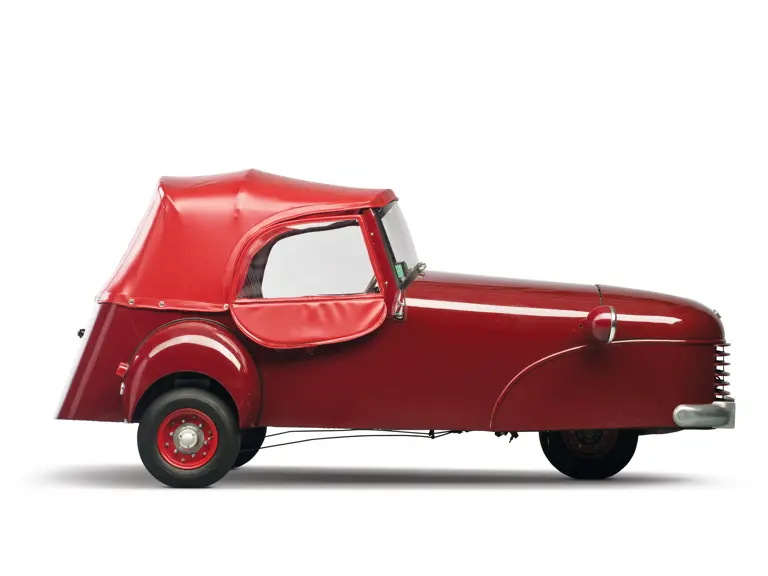
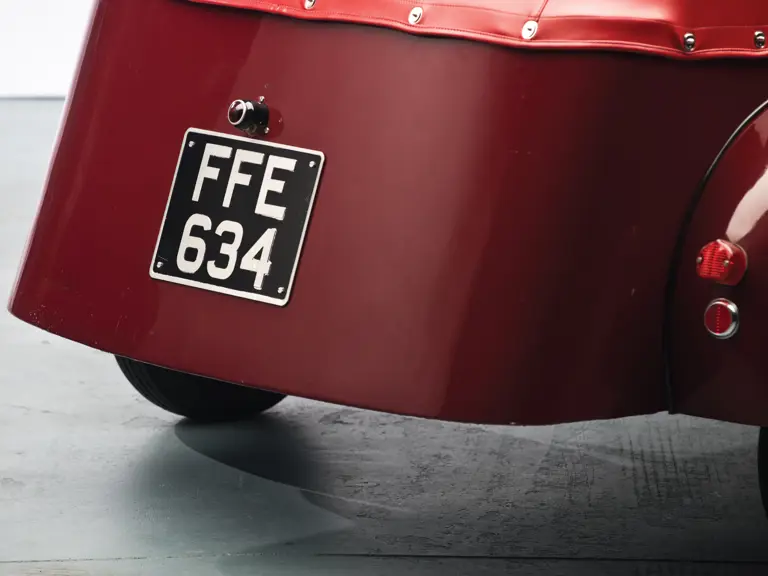

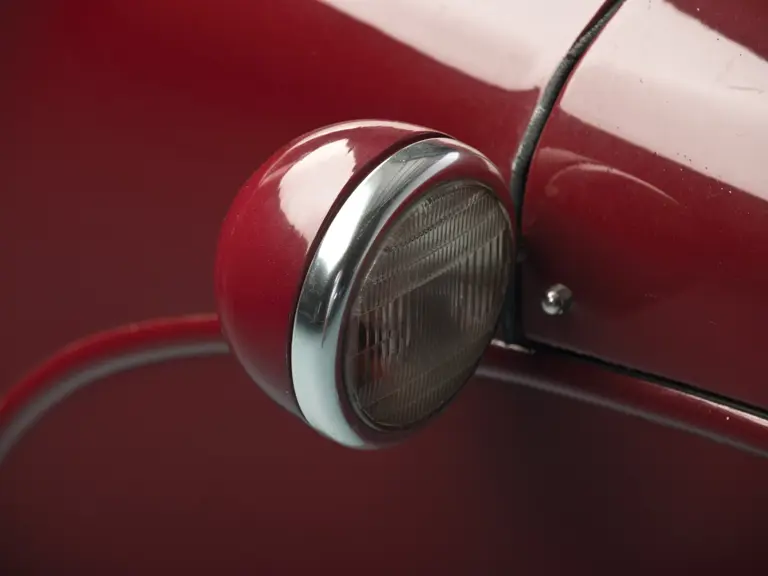
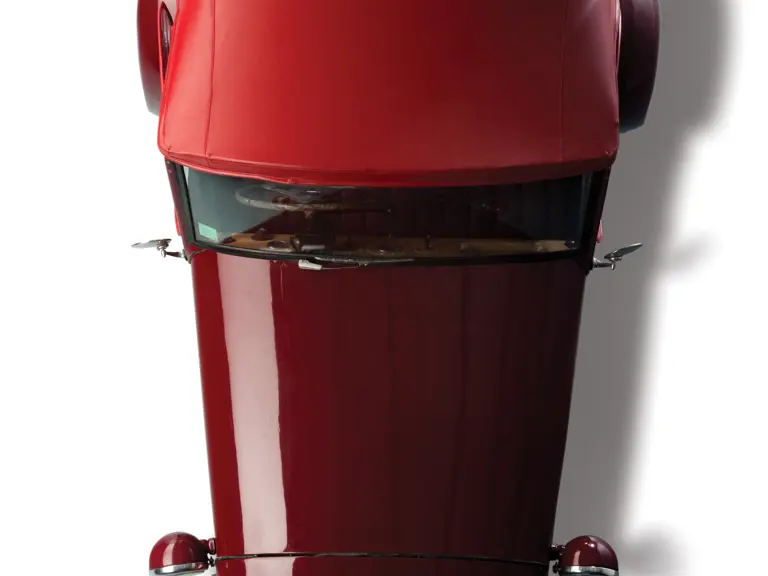
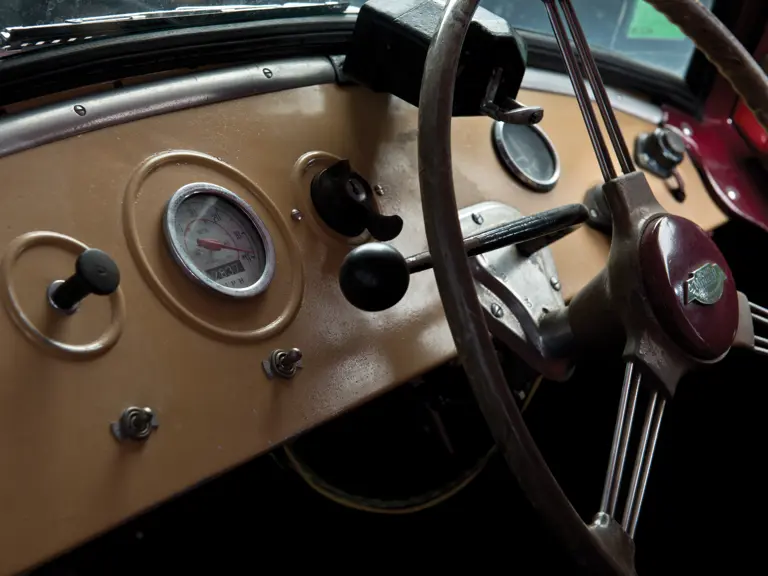
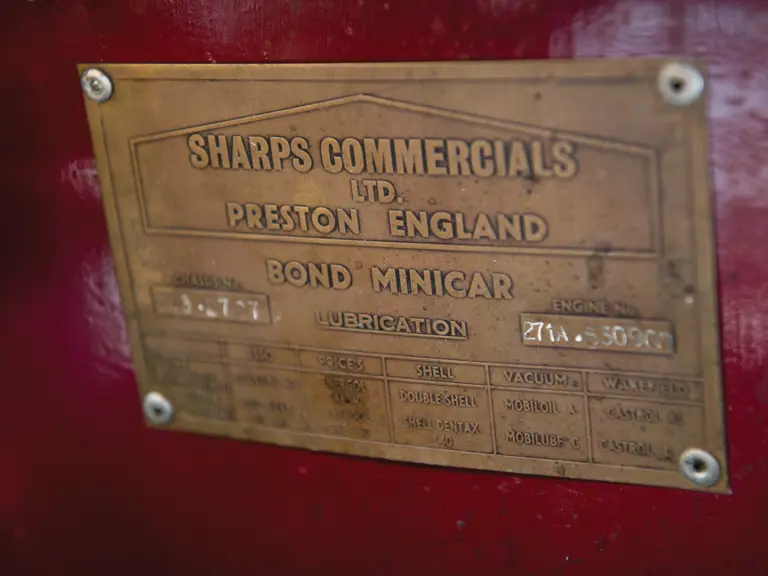
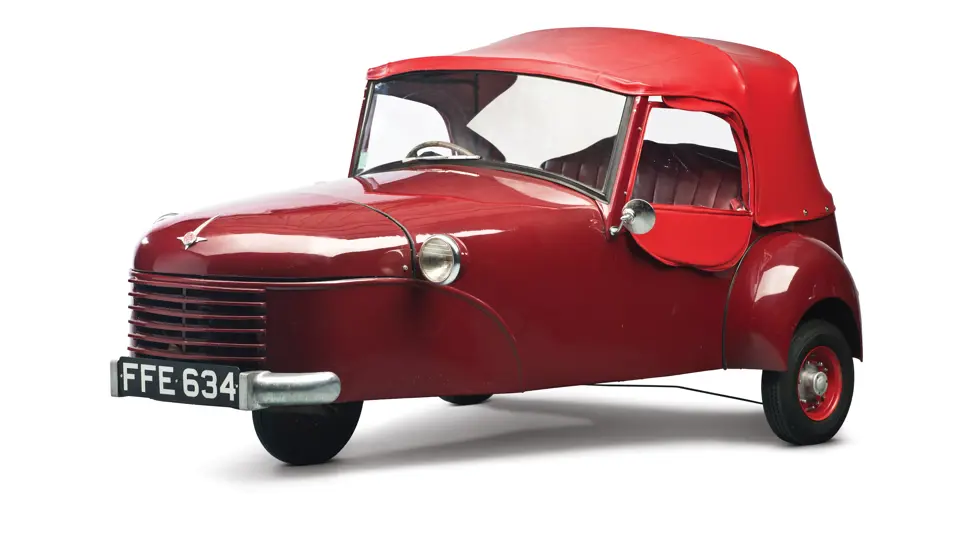
 | Madison, Georgia
| Madison, Georgia
